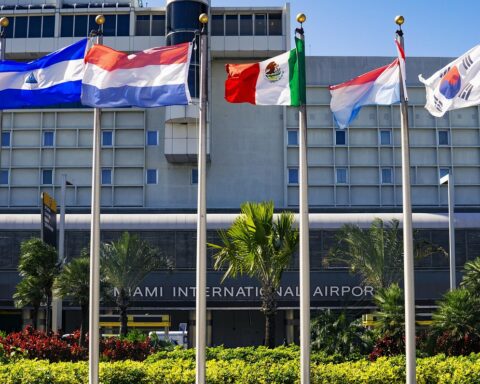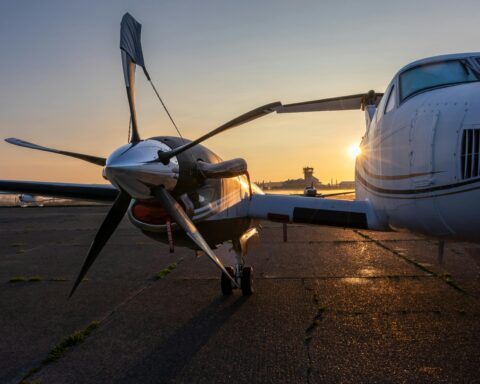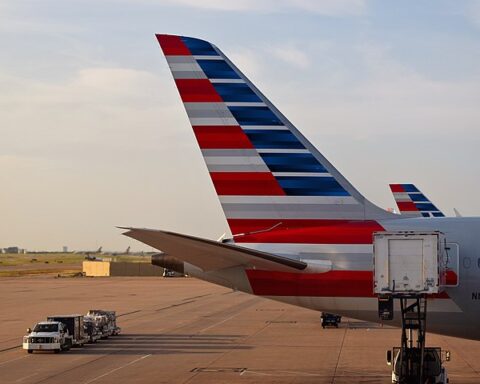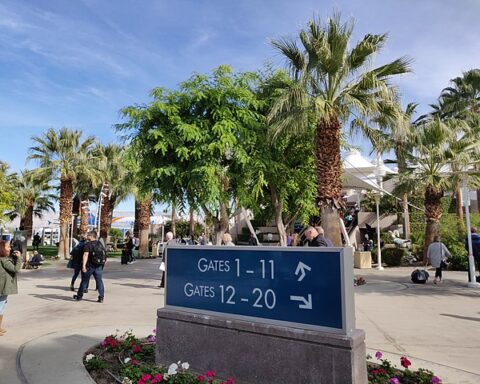Michigan has no plans to take its foot off the gas pedal on transportation improvements amid anticipated funding challenges over the next five years, according to the state’s 2024-2028 Five-Year Transportation Program.
The Michigan Department of Transportation (MDoT) recently released the report, which calls for $15.8 billion in anticipated state and federally funded investments to highways as well as buses, railways and airports.
The plan includes directing $11.2 billion to MDoT roads and bridges, with the state’s $3.5 billion Rebuilding Michigan program contributing more than $592 million to the total. Planned transportation projects including bus, marine, rain and ports total $3.7 billion. Airports will get another $989 million.
Securing the funding necessary to fulfill the plan could pose some challenges, said MDoT director Brad Wieferich, who emphasized the need for continued momentum beyond the progress made over the last few years.
Through the Rebuilding Michigan program, Bipartisan Infrastructure Law and additional grants, MDoT projects since 2020 in Detroit have included future building of the New Center Intermodal Facility, rebuilding community reconnections around Interstate 375, improving US-12 from I-96 to Cass Avenue as a multimodal corridor, and rebuilding the deck plaza over I-696 in Oak Park to reconnect communities.
“This five-year program continues to build on these past successes and create new opportunities for the future,” Wieferich said. “However, one of our primary challenges continues to be funding certainty. The costs of developing and maintaining our transportation infrastructure are significant and, at current investment levels, we are anticipating a gradual and continuing decline in pavement and bridge conditions.”
An estimated $2.65 billion in additional investment per year will be needed to meet Michigan’s statewide goal for having all pavement and bridges in good condition, said Wieferich, adding that the state would continue to collaborate with partners as well as seek funding from state and federal sources.
Projects the state has planned through 2028 include:
- The Gordie Howe International Bridge (GHIB) Project, a new freeway-to-freeway border crossing system between Detroit and Windsor, Ontario. With direct connections to highways in each country, the crossing will improve the flow of international trade between the United States and Canada. In addition, the project is investing in improvements near the U.S. Port of Entry (POE), including five pedestrian bridges crossing I-75, a 6-foot protected cycle track on Fort Street between Green and Junction streets, and a greenway to connect pedestrians and cyclists from the GHIB to I-75 crossings and the pedestrian bridge at Junction Street. The GHIB will be publicly owned by the State of Michigan and the government of Canada, with the Windsor-Detroit Bridge Authority (WDBA) overseeing the work of the public-private partnership (P3), managing the concession agreement and payments, and setting and collecting tolls. A completion date has not yet been determined.
- The Blue Water Bridge (BWB) spans the St. Clair River and carries international traffic between Port Huron, Michigan, and Point Edward and Sarnia, Ontario. Located near the I-94/I-69 interchange, the bridge is an important gateway to Canada. This project is anticipated to improve air quality with more inspection booths and secondary inspection areas, reducing the number of waiting trucks. The onsite examination facility will reduce the risk of undetected hazardous goods moving through local streets. Additionally, local city streets and entrances will be improved to allow clear egress to the plaza, and a new duty-free store will be built and located in the outbound direction, accessible without using local roads. The first construction phase will be completed in 2024, with the south side of the expansion in 2026.
- Continuing work on I-475, an interstate bypass route serving downtown Flint. A planning and environmental linkages (PEL) study was completed last year, identifying alternatives that reflect the vision and values of the greater community. MDoT is examining the potential to “right-size” the interstate through a potential lane reduction while also looking at the possibility for enhanced bridges for better connectivity in the community through multimodal transportation, such as nonmotorized paths, sidewalks and greenspace. Work is scheduled to begin in 2024.
- Rebuilding 1.9 miles of US-12 (Michigan Avenue) from I-96 to Cass Avenue to create a multimodal corridor in downtown and Corktown Detroit. The project will include dedicated transit and connected and automated vehicle (CAV) lanes between I-96 and M-1, improvements for pedestrian, cyclists, and transit users, as well as mid-block crossings, curb bump-outs, dedicated turn lanes, restriction of through-lanes and relocation of transit stops to improve pedestrian safety. Work on the project will take place in 2025.
- A rail project to enhance the safety along MDoT’s Michigan Line between Dearborn and Kalamazoo. It includes installation of fencing, improvements to at-grade crossings, improvements to pedestrian channelization to legal railroad crossings, trespass monitoring devices and other appropriate capital improvements determined through the needs assessment process. Specific locations of improvement will be areas where trespassing has resulted in strikes or near misses in the past. Construction began in summer 2023.
- Installing eight new passenger boarding bridges at the Gerald R. Ford International Airport. The new boarding bridges will provide enhanced accessibility for all passengers by eliminating the need for ground-level loading and will enhance energy efficiency with pre-conditioned air and auxiliary power.
- Installing four 150-kW or greater chargers at intervals of no more than 50 miles along a 5-mile radius of each of the state’s designated alternative fuel corridors, which include each of the state’s major highways. By 2030, chargers will be deployed at 43 sites at full build-out. The state has issued a request for proposal for all 43 sites contingent on funding availability.
Strategic Partnerships, Inc. can provide detailed information on contract opportunities, plus existing and future government funding. For more information, contact research@spartnerships.com.
Photo by Qviri courtesy of Creative Commons.













